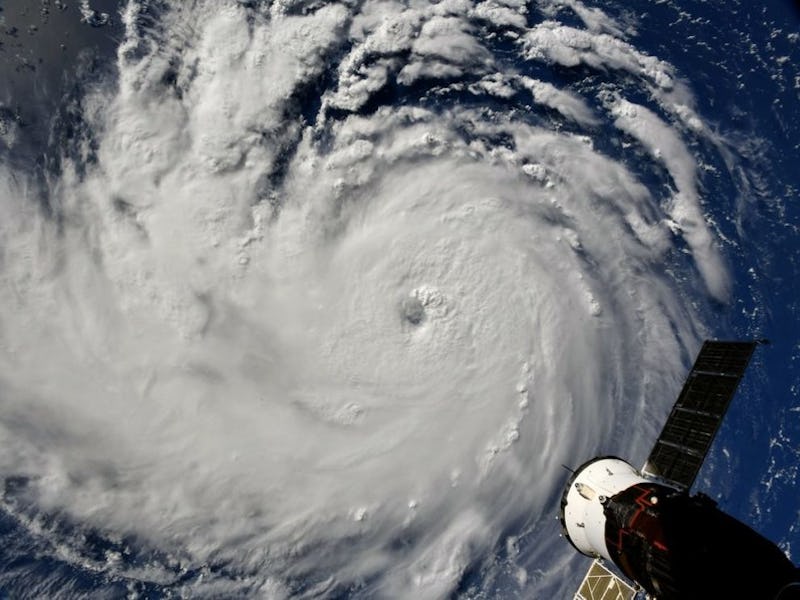Hurricane Florence Storm Surges Are Like Pointing a Hair Dryer at Puddle
It's a bigger deal than the wind and rain.

On Thursday morning, Hurricane Florence crept ashore from the Atlantic Ocean, and before the rains had even begun, the storm surge inundated coastal towns in North Carolina and South Carolina, turning roads into rivers. But how, you may ask, do floods occur where it isn’t raining? The answer is a storm surge, a force of nature whose story is as bewitching as it is violent.
This element of the hurricane ripples out from the storm, often forming the leading edge of its local effects. And while a storm surges are mentioned in news reports that go with hurricanes, they sort of exist on the fringes of weather reporting.
What is a Storm Surge?
To put it simply, a storm surge happens when a hurricane pushes ocean water onto the land. During a surge, the level of ocean water rises as a result of hurricane-force winds. Imagine pointing a hair dryer at a puddle and moving it from the center to the edge. This imitates the motion of a hurricane coming ashore from the ocean. As the dryer moves toward the puddle’s perimeter, the air moved by the dryer creates little waves that flow beyond the edge of the puddle. This is more or less the same thing that happens during a storm surge.
When a hurricane is out over the ocean, its winds swirl water beneath it. Out there, where the water is deep, it has relatively little effect. Once that swirling action reaches shallow depths near land, though, the water that’s picked up momentum can no longer simply swirl in the deep. It has to go somewhere. Here’s what it looks like when that water runs out of space to move:
A storm surge moves like a very fast-moving high tide that rolls ashore in the same way a wave breaks on the beach — then just keeps moving inland.
In the case of Hurricane Florence, some estimates are predicting that storm surges could be up to nine feet. This literally means, as shown in the visualization below, that the water coming ashore from the hurricane could reach nine feet deep in some places.
Hurricane Florence’s Storm Surge:
Many officials are more worried about Hurricane Florence’s storm surge potential than what category it is, which only depends on sustained wind speeds. When it comes to storm surges, the potential for a serious surge depends more on which direction the wind is blowing and the size of the storm.
When it comes to hurricanes, it’s not how fast the hurricane moves the water, but how much water the hurricane is moving. A storm with a larger diameter will move more water, which makes for a larger storm surge. Additionally, if the hurricane’s prevailing winds are blowing toward the shore, the surge will be larger.
A storm surge isn't a problem for people until it reaches land.
The diameter of a hurricane affects more than just the surge, though. In the case of Hurricane Florence, which made landfall as just a category 2, its large diameter means that it will still cover a large area, and its relatively slow speed — how fast it moves across land and water — means that it will continue to churn up ocean water, creating a more significant surge.
This slow motion also means that the areas affected by Florence will be pummeled by damaging winds for longer.
“The larger and slower the storm is, the greater the threat and impact, and we have that here,” National Hurricane Center Director Ken Graham said Thursday, reported NPR. “Most of the fatalities in these tropical systems is water.”
So even if the rain isn’t falling, coastal residents should stay aware that they’re not out of the woods. In the event that you’re in a storm surge zone and water starts flowing, don’t try to drive, as even an inch or two of water can be dangerous. Try to get to higher ground, and if you have a second story in your house, climb up to it. But the safest thing to do if you’re on the coast in Hurricane Florence’s path is to evacuate. A storm surge is nothing to mess with.